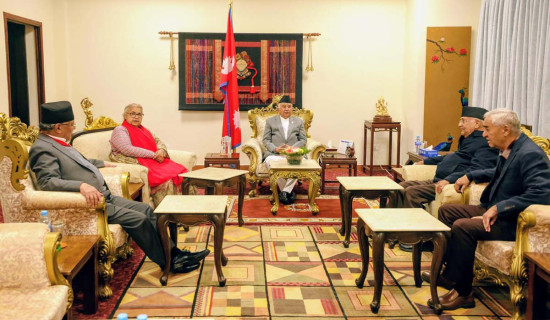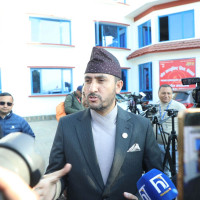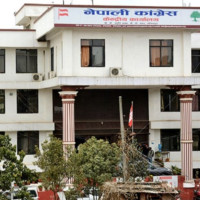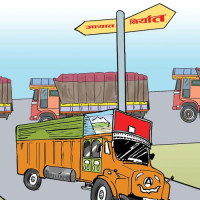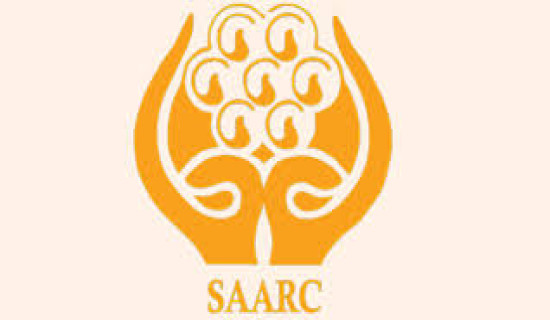- Tuesday, 23 December 2025
TikTok regulation is technically tough: MoICT
Kathmandu, Nov. 19: The Ministry of Communication and Information Technology (MoCIT) has cited the technical difficulty in regulating the content posted on TikTok, a social media application that the government banned on November 13.
Among many other things about regulation, the most important one is the technical aspect related to language, the ministry said on Saturday.
Currently, about 90 to 95 per cent of TikTok content in Nepal is made in Nepali. Even if it is to be regulated through machine learning, this is not immediately possible due to the language barrier, and it seems that a lot of time and money will have to be spent to develop the technology that understands the Nepali language, according to MoCIT.
“It seems that huge amount of TikTok content is being produced from Nepal even now. Looking at this volume, regulation without technology is almost impossible.
Therefore, no matter how much regulation is talked about for the time being, it seems to be a big problem to implement it in practice,” stated the MoCIT.
“Therefore, the government has decided to close TikTok in Nepal only until the environment for the actual implementation of the regulation is created, which is correct by all accounts,” it further added.
Meanwhile, the ministry also defended its move to ban the social media app citing the high consumption of internet bandwidth by the TikTok.
“About 25 to 30 per cent of the total international internet bandwidth entering Nepal was being consumed by TikTok which is more than single consumption of any platform,” it informed.
At present, around 2.2 TBPS of international bandwidth is being received through various network service providers. For that volume of bandwidth, which costs 3-4 US dollars per MBPS, millions of rupees a month needed to be paid to the foreign supplier.
In addition to reducing such expenses and providing high-speed internet service to the users, the service provider has claimed that it kept a CDN (Content Delivery Network) server to cache the data of the platform that consumes high bandwidth.
According to the MoCIT, all the big internet and telecom companies have claimed to use the CDN server of Akamai and TikTok's parent company ByteDance for TikTok, however, even the service providers themselves do not have the exact details of what percentage of data is being browsed from TEDA CDN server and what percentage of data is being browsed from international bandwidth.
It is said that 99 per cent of the content available on Akamai is TikTok. However, ByteDance decides how much traffic to channel to Akamai and how much to send directly. Looking at it this way, it seems that saying 'CDN server is used' is not an exaggeration, maintained the ministry.
Earlier, experts and organisations including the CAN Federation had expressed serious objections to the government’s move to ban the social media platform.
The CAN Federation, in a statement, had said that it would be counterproductive to ban the social media platform without taking initiatives of content regulation. It doubted the motive of the government on the move to ban TikTok and suggested to regulate and manage the use of social media since the speed of the information technology couldn’t be obstructed.
The CAN Federation also expressed its readiness to support the government in every possible way for technical oversight. Earlier, the TikTok had expressed its astonishment on the ban.
Sending an email to the Nepal Telecommunication Authority (NTA), the telecom sector regulator, on November 13, the company expressed its surprise on the move while also asking for the reasons for it stating that bans on the social sites were ‘misguided’.
The NTA had informed the TikTok about the government’s decision on October 27.
The email sent by TikTok’s Head of Public Policy and Government Relations for South Asia, Ferdous Mottakin, stated that the ban would not only hamper the company’s investment plans but also have a severe economic impact on the Nepali content creators.
“Nepali businesses, who already rely heavily on TikTok, use our platform to market their products and keep their businesses afloat. As a result of this ban, these businesses will be significantly affected as well,” read the email.
The company also claimed that user safety is its top priority. “We address content and behaviour that violate our Community Guidelines through a combination of policies, technology, and moderation, which may include removing contents and accounts,” it said.
Earlier, on October 5 this year, the TikTok and NTA had signed a Memorandum of Understanding (MoU) to jointly conduct an internet safety awareness campaign in Nepal. The company was also registered in Nepal as a digital service tax payer on August 29 this year.
“We opened up the access of the ‘Trust and Safety Enforcement Tool’ to the Government of Nepal on June 7, 2023 to ensure the government can report any content that they find is violative of local laws. We proactively removed 2.98 million videos from our platform in Nepal between October 2022 to June 2023 for violating our Community Guidelines,” the TikTok said.
Meanwhile, a section of civil society has been arguing that the ban on the social media platform has violated the citizens’ right to expression.



